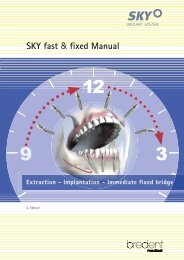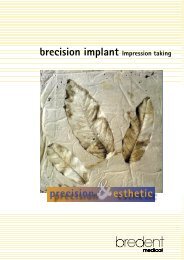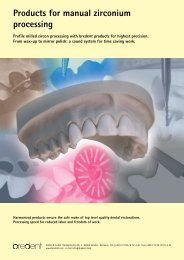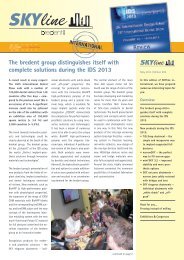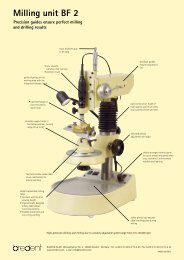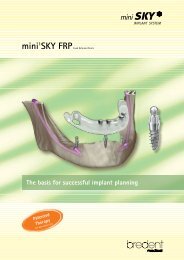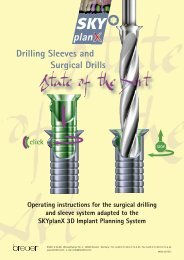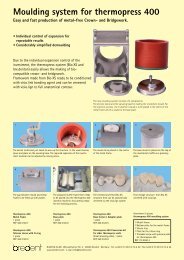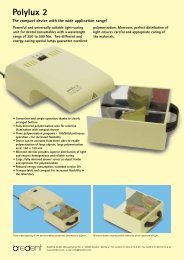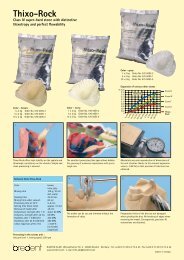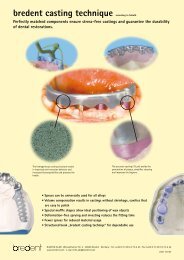crea.lign download pdf - Bredent.co.uk
crea.lign download pdf - Bredent.co.uk
crea.lign download pdf - Bredent.co.uk
Create successful ePaper yourself
Turn your PDF publications into a flip-book with our unique Google optimized e-Paper software.
Preface<br />
“Non-prep technique” and<br />
“minimally invasive preparation technique”<br />
Preparation of the tooth has always been <strong>co</strong>nsidered to be an essential pre<strong>co</strong>ndition for the production<br />
of a prosthetic restoration. In the preparation process material is removed to <strong>crea</strong>te space for<br />
build ups or inserting dental restorations. The removal of natural tooth structure results in <strong>co</strong>nsiderable<br />
loss of biological material. Loss of structure can be limited through the application use of<br />
adhesive bonding technique, which is used when luting/cementing veneers. In such cases, however,<br />
the preparation results in irreversible - yet limited - damage. In recent years a new type of prosthetic<br />
therapy has been endorsed, which enables esthetic and/or functional <strong>co</strong>rrection of the tooth through<br />
the use of very thin veneers. The veneers are luted directly to the etched enamel without using a<br />
substructure.<br />
Numerous advantages can be observed:<br />
• <strong>co</strong>mplete reversibility of the prosthetic treatment<br />
• no destruction of hard tooth structure (biological loss) caused by preparation<br />
• excellent adhesive bonding, directly to the enamel<br />
The indication range includes cases in which the intended dimension of the tooth is larger than the<br />
existing dimension. Such „additional veneers“, are based on a <strong>co</strong>mplex procedure, which depends<br />
highly on the dental technician‘s skills. Moreover it is possible to expand the indication range of these<br />
„additional veneers“ by preparing the tooth in a minimally invasive manner. If parts of a tooth to be<br />
restored represent a potential <strong>co</strong>nstraint to the use of an „additional veneer“, minimal preparation<br />
is suitable to change the shape of the tooth by slightly reducing the tooth structure without the need<br />
for full preparation of the tooth. In this case, minimal removal of tooth surface is also based on the<br />
<strong>co</strong>ncept of reversibility and the advantage of direct bonding to the enamel is maintained.<br />
4<br />
<strong>crea</strong>.



